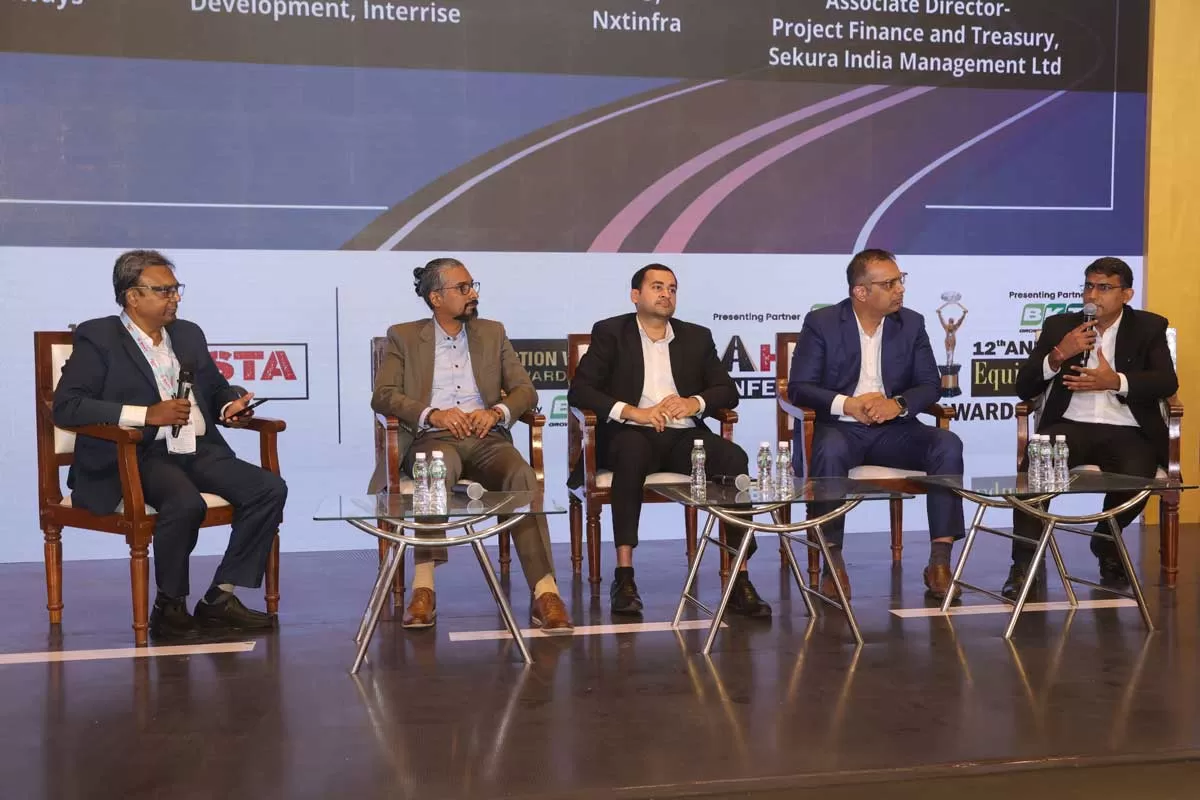The roads sector has witnessed a strong growth trajectory and the roads conference aptly chose multiple power-packed panel discussions.
Tapping into India’s
economic engine
In a remarkable achievement, the country has doubled its road network over the past decade, which has not only enhanced connectivity but also attracted substantial investments from infrastructure investment trusts (InvITs). “From the investor’s perspective,” said Vijay Agarwal, Managing Director, Equirus Capital, “around 13 infrastructure investment trusts have been invested in road assets and nearly `2 trillion is under investment.” Similarly, drawing from Upa Lokayukta Sanjay Bhatia’s remarks, Muraleemohan, COO, Maple Infra, highlighted growing international interest in Indian road assets and emphasised, “The time to be in India is now.”
He noted that the Government’s policies have created an unprecedented coexistence of multiple investor, developer and contractor classes within the highway industry, noting that the ecosystem offers equal opportunities to all players.
“This is what excites international investors,” he added.
Road assets as an
investment class?
Highlighting the robust infrastructure ecosystem in India, Muraleemohan called for greater recognition of different investor classes and their specific needs since policy stability is critical for institutional investors.
“Highways provide tolling assets that give investors exposure to toll revenues, which are directly linked to the country’s nominal GDP. Toll rates are inflation-indexed, allowing access to traffic volumes that correlate with the GDP, making it a great way to tap into the fastest-growing large economy in the world,” said Vineet Sarawagi, Head - Business Development, Interise, praising India’s highway sector as an attractive investment destination. Going further, to enhance the sector’s appeal he suggested that toll rates be indexed to both the Wholesale Price Index (WPI) and the Consumer Price Index (CPI) as blending both indices could provide a more accurate reflection of inflation and boost investor confidence in upcoming projects.
“Investors were hesitant to take on construction risk, which led to mixed experiences,” remarked Gaurav Chaturvedi, CFO, Nxtinfra, emphasising that InvITs have created a framework where different stakeholders could coexist more effectively. Breaking down the sector’s evolution, he described three distinct phases. “In the first phase, contractors took on the role of developers, primarily to feed their contracting arms and hold assets until maturity. The second phase saw investors entering the market, but many were cautious about the construction risk involved. Now, in the third phase, all stakeholders have a clearer understanding of their roles, making this an ideal time for collaboration and growth.” Chaturvedi concluded that this maturity in the sector presents a unique opportunity for stakeholders to engage in India’s infrastructure growth story with a balanced approach to risk and reward.
HAM and TOT: Easing
investor risk
Pointing out how HAM and TOT frameworks are instrumental in easing risk for investors, Deepak Chaudhary, Associate Director of Project Finance and Treasury, Sekura India Management, said a major
portion of risk in road projects lies in the construction phase, which many international investors are hesitant to take on. “For these investors, TOT is an ideal solution, allowing them to focus on operational assets without construction risk.” In his view, risk assessment is critical and relying on external consultants is not enough. So he emphasised upon the need for a strong inhouse technical team to analyse and mitigate risks before entering any transaction.
Potential of GNSS for
toll collection
“Over the past 30 years, electronic toll collection (ETC) has been a major positive disruptor, addressing issues like revenue leakage and skirmishes at toll plazas. With 99 per cent of toll revenue now assured through technology, investors are only taking growth risks, not revenue collection risks,” said Muraleemohan about the transformative impact of
ETC systems.
He noted that global navigation satellite system (GNSS) and satellite-based tolling allows for precise tolling based on actual highway use, underlining the confidence it brings to investors. He also pointed out that GNSS requires significant infrastructure to detect vehicle entry and exit points on highways and suggested gantry-based tolling, which could eliminate the need for toll plazas entirely.
The road ahead
The 14th RAHSTA Expo – India’s first indoor trade fair for construction equipment technology – provided a platform to over
100 companies to showcase their latest technologies, products and solutions even as over 50 speakers discussed innovative technologies, sustainable practices and funding opportunities for the roads sector.
Summing up the event,
Pratap Padode, Founder and President, FIRST CONSTRUCTION COUNCIL, and Editor-in-Chief, ASAPP Info Global, said, “India’s road-building progress is remarkable but questions around the quality and longevity of these roads persist and the need for climate-resilient infrastructure has come to the fore, especially after the devastating 2018 floods in Kerala, which damaged 25 per cent of the state’s highways and major roads. In response, India is making strides in building resilient infrastructure, with projects like the $ 500 million Green National Highways Corridor Project (GNHCP), aimed at constructing 800 km of climate-resilient highways across four key states by 2024. Similarly, the two-day conference, for its part, addressed the sector’s most pressing challenges and opportunities, offering valuable insights and paving the way for building resilient and sustainable road infrastructure in India.




















